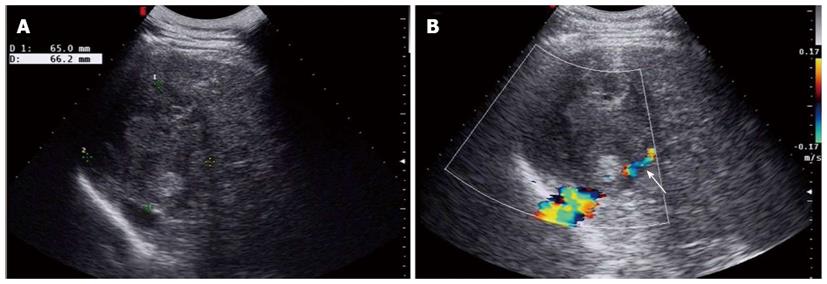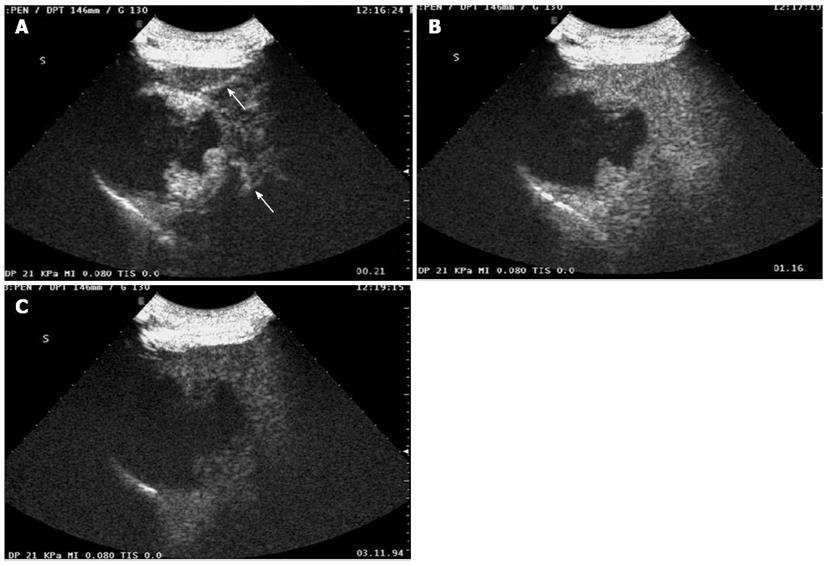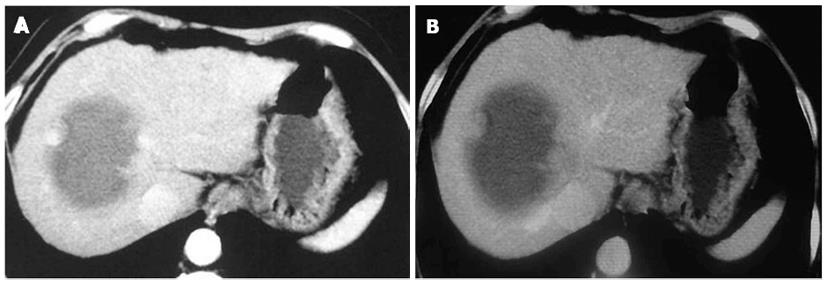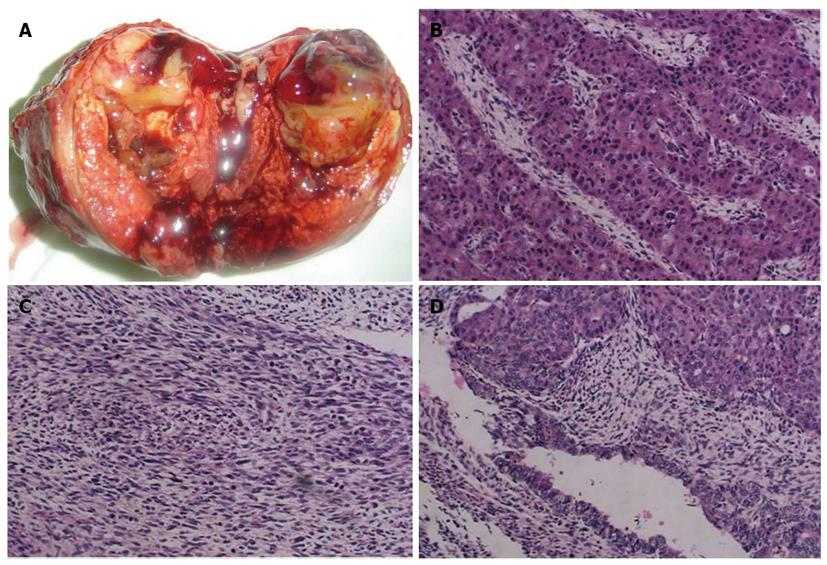Copyright
©2014 Baishideng Publishing Group Co.
World J Gastroenterol. Feb 14, 2014; 20(6): 1630-1634
Published online Feb 14, 2014. doi: 10.3748/wjg.v20.i6.1630
Published online Feb 14, 2014. doi: 10.3748/wjg.v20.i6.1630
Figure 1 Conventional ultrasonography of a primary hepatic carcinosarcoma.
A: Gray-scale ultrasonography showed an ovoid heterogeneous echogenic mass in the right liver; B: Color doppler imaging showed the right hepatic vein compressed by the mass (arrow).
Figure 2 Contrast-enhanced ultrasonography of a primary hepatic carcinosarcoma.
A: Contrast-enhanced sonography showed early intense peripheral nodular enhancement in the arterial phase (21 s) with two feeding arteries (arrows); B: Peripheral nodular portion of the tumor was iso-enhancing compared to the surrounding liver in the portal phase (76 s); C: Peripheral nodular portion of the tumor was washed out and was hypo-enhanced compared to the liver in the later phase (191 s).
Figure 3 Contrast-enhanced computed tomographic of a primary hepatic carcinosarcoma.
A: Contrast-enhanced computed tomographic revealed peripheral nodular enhancement in the arterial phase with a large internal non-enhancing portion, which correlated with contrast-enhanced ultrasonography findings; B: Peripheral nodular portion of the tumor was isoenhanced in the portal phase.
Figure 4 Pathologic findings of the primary hepatic carcinosarcoma (hematoxylin and eosin, original magnification × 200).
A: A section of the gross specimen showing a well-demarcated, peripheral nodular solid mass with a central area of necrosis and hemorrhage; B: Light microscopy showing moderate hepatocellular carcinoma; C: Stromal sarcoma components are comprised of spindle cells; D: Atypical spindle and epithelial cells are seen, which are consistent with hepatic carcinosarcoma.
- Citation: Liu LP, Yu XL, Liang P, Dong BW. Characterization of primary hepatic carcinosarcoma by contrast-enhanced ultrasonography: A case report. World J Gastroenterol 2014; 20(6): 1630-1634
- URL: https://www.wjgnet.com/1007-9327/full/v20/i6/1630.htm
- DOI: https://dx.doi.org/10.3748/wjg.v20.i6.1630












